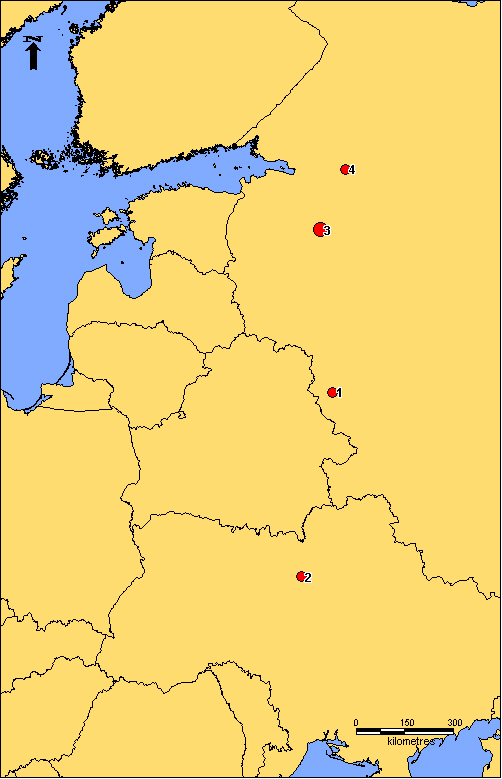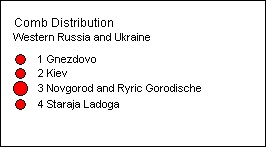

At the easternmost extreme of the survey area, combs are well known in north-western Russia, where they represent one of the most frequently excavated classes of personal possessions or 'everyday items' from both settlement and burial contexts (Pushkina 2004, 43, 51). Smirnova's (2005, 86-92) survey of material from the Novgorod environs provides the most up to date and comprehensive survey of Russian comb material, and readers are referred to this for detail. The aim is simply to outline some of the main trends, and to note patterning at key sites. Drawing heavily on Smirnova's survey, it seems worthwhile to bring this synthesis to a wider audience, and to situate the patterning in its broader northern European context.
Pre-Viking and early Viking-Age sites | Later Viking-Age and medieval sites
In early Viking-Age Russia, Type 5 dominates, followed by Type 6 in the 10th century. With the turn of the second millennium, Types 9 and 14a become increasingly popular, but by the later medieval period, Type 13 is dominant. The Russian corpus, then, sits well with the general European chronology.
The comments facility has now been turned off.
© Internet Archaeology/Author(s)
University of York legal statements | Terms and Conditions
| File last updated: Tue Sep 20 2011